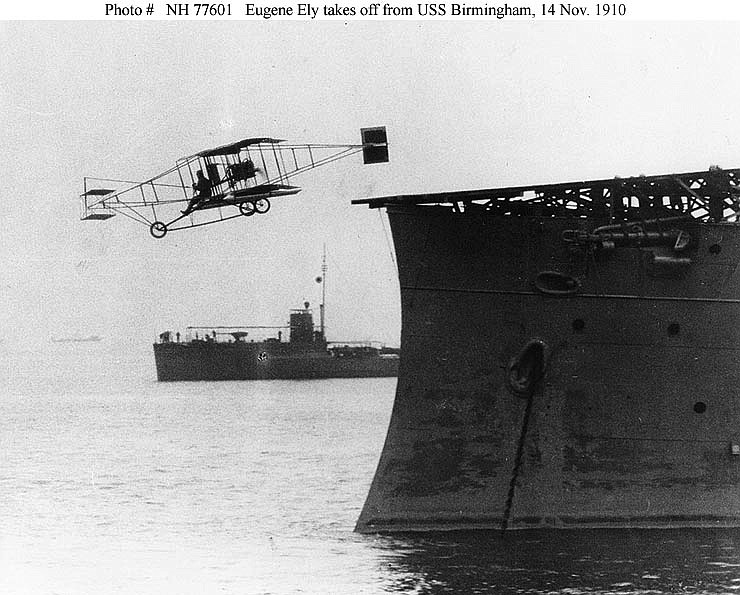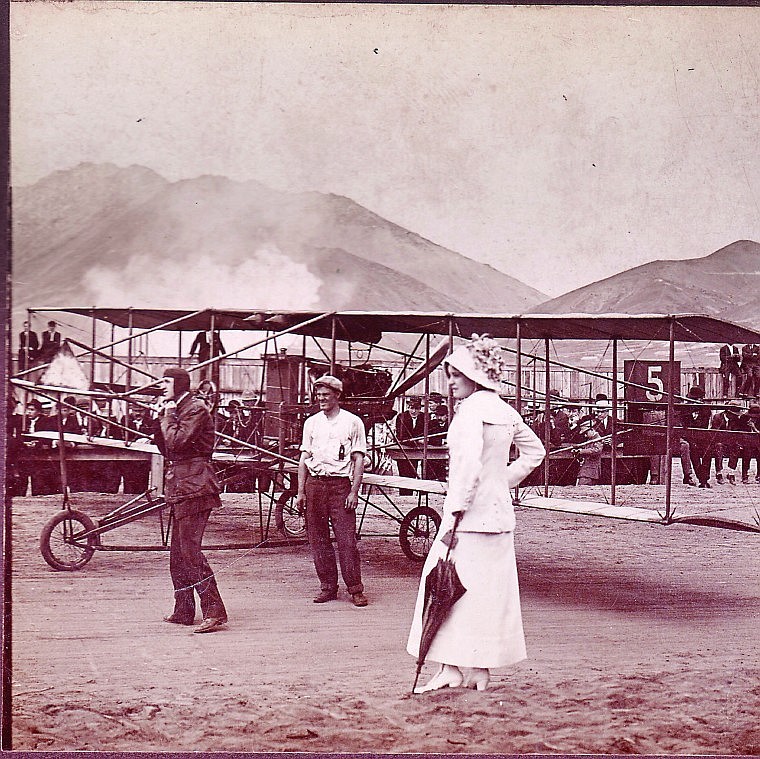'Bird-Man sails in the air'
The rumors had been circulating for days and excitement was building in Kalispell.
The Daily Inter Lake made it official on June 19, 1911, that there was to be an aviation event two days later in Kalispell at the Flathead County Fairgrounds. Citizens of Kalispell had been reading about the exploits of daring aviators or “Birdmen” — but this would be the first event in Kalispell and one of the first exhibitions in Montana.
Eugene Burton Ely was on his way to the Flathead to make the first airplane flight in Kalispell.
Ely, 24, one of the pioneering early aviators, had achieved fame by becoming the first pilot to take off and land on a ship. He was employed by the Curtiss Exhibition Co. and was in Montana to promote sales of the Curtiss airplane and to make money. He was to receive a portion of the gate receipts for each performance.
This was not his first trip to the state. On June 17, 1910, he tried a flight at Billings where he got off the ground to fence-top levels, then landed. His early machine had only a 30 horsepower, four-cylinder engine and just did not have enough power for flight at that altitude.
He was better prepared for his Montana flights in 1911.
The little D-60 was built by Glenn Curtiss, had a 60-horsepower water-cooled V-8 engine and the propeller was located at the back of the engine which pushed the plane.
The wingspan was 26 feet and the machine was 29 feet long. The rudder had the number “5” on both sides. The frame was made of spruce with bamboo supports. The reported weight was 1,585 lbs and the top speed was 60 mph. The list price without delivery was $5,000.
The aircraft was moved about the country by rail in a boxcar — the wings were removable for that purpose. It was accompanied by three “mechanicians” and took several hours to reassemble and tune each time.
Ely had logged 106 hours of flight by the time he got to Kalispell.
One flight was made in Butte on June 9, 1911, where an estimated 10,000 people watched Ely nearly disappear at 7,800 feet.
The plane was damaged on landing, so no other flights could be made. In Great Falls on June 14, Ely made three flights at Black Eagle Park. Local business closed at 1 p.m. and even the Boston & Montana Smelter closed its offices and all but essential help were allowed time off to watch the exhibitions.
Ely reported the air was so rough that six wire braces were broken. The crowd was estimated at 10,000 people. The little plane was loaded again on a Great Northern Railway car and moved to Kalispell.
By June 19 the Kalispell plans were already in motion.
The Great Northern announced half-price fares to the event good anywhere from Troy to Cut Bank. The passenger boats on Flathead Lake announced half-price price fares from Polson to Somers where a special train waited.
People started to arrive a day early. At the fairgrounds a large tent was set up at the race track for the aeroplane. The flight was to start on June 21 at 2 p.m. in front of the grandstands. Banks closed at noon and most other businesses in town closed before the event.
Thousands of people filed into the grandstands and many more lined rooftops and the top of Buffalo Hill to avoid paying the 75-cent admission fee.
The Daily Inter Lake made the following report on the front page:
“Bird-Man Sails In The Air Above Great Multitude”
“Ely’s Successful Flights Today At Fairgrounds Today Give Kalispell People Their First Sight Of Aeroplane”
“The flight had been advertised for two o’clock and it was only a few minutes later than that when the manmade bird of cloth, wood and wire was wheeled down the track and stopped at the turn into the stretch. Ely talked quietly with visitors and his mechanicians and was apparently the least concerned of anyone. He made no change of clothing, except to replace his soft hat with a cap and put a leather coat over the one he was wearing.
“A Mechanician gave the propeller a few whirls and then the assistants held back with all their might until the aviator gave the signal to let go and the machine came rapidly down the track, rising gracefully like a gigantic dragon fly almost in front of the grandstand. The crowd gave a spasmodic cheer as the machine left the earth but was too intent on watching the flight for much demonstration.
“Ely sailed up into the wind and at an altitude of a couple of hundred feet circled the grounds and then sailed out over the hills to the north and came back in a great ellipse flying easily but covering distance rapidly. The veering of the machine as he went higher into the air indicated that inconstant currents were blowing above. Coming back above the grounds the aviator slipped down as if on a great incline and the wheels reached the ground and in the middle of the enclosure came to a stop. As he passed the grandstand the crowd again cheered. It was a beautiful flight and the crowd expressed satisfaction even if nothing more were to follow.
“It had been intended to make two additional flights but on account of the cross winds above Ely had the announcement made that on the next ascent after racing with an automobile he would continue the flight combining the two.
“The machine was again taken to the starting point and again the buzz of the machinery told it was coming. At the same point where it rose the first time it again mounted into the air and Ely sent it around the track at a comparatively slight elevation. On the track at the turn J. D. Dudley, driver of McIntosh’s automobile, was waiting and he turned the car loose but though he turned on all the power he dared on the short turns he could not keep pace with the bird-man above.
“Circling the track twice Ely sent the machine higher into the air, and off to the northwest until he was almost lost to sight in the distance and then he turned and came back in even flight going as steadily as a great bird and with less apparent movement. At a mile away the drumming of the engine was heard and two or three times more he circled above the grounds and then shutting off the power again glided easily to the earth.”
No estimate of the number of viewers was made but it had to be in the thousands and likely would have been the biggest event in Kalispell history up to that time.
After the exhibition in Kalispell, Ely flew in Lewistown and at Fort Missoula to end his Montana tour.
The life expectancy of early aviators usually was short. On Oct. 19, during his second flight at the Georgia State Fairgrounds at Macon, Ely crashed and sustained fatal injuries. He was just shy of his 25th birthday.
He was thrown some 30 feet, breaking his neck, and lived only a few minutes. The crowd became unruly and rushed to the wreck to strip souvenirs from his plane and pieces of clothing from his body.
It was a tragic end to a short but brilliant flying career. Hundreds of thousands of spectators had watched Ely fly but his most notable achievement was that Ely had successfully demonstrated the possibility of the aircraft carrier. For tens of thousands in Montana Ely would be remembered as the pilot of the first airplane they ever witnessed.








